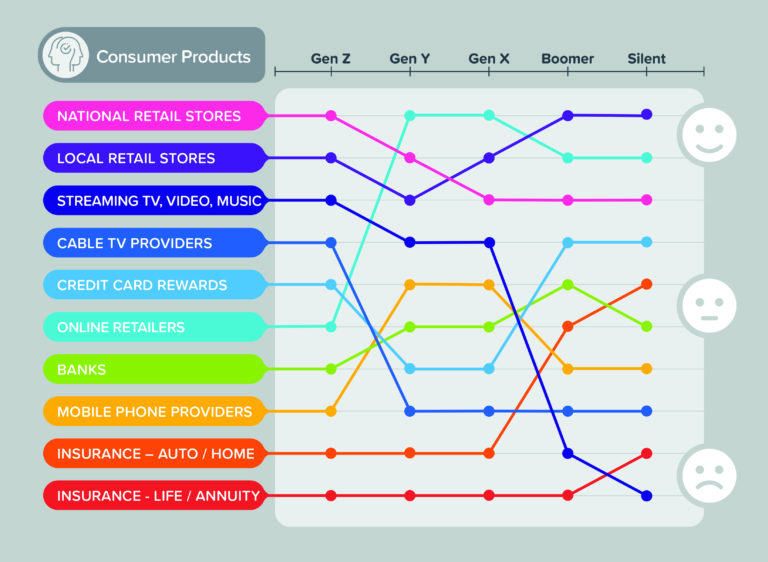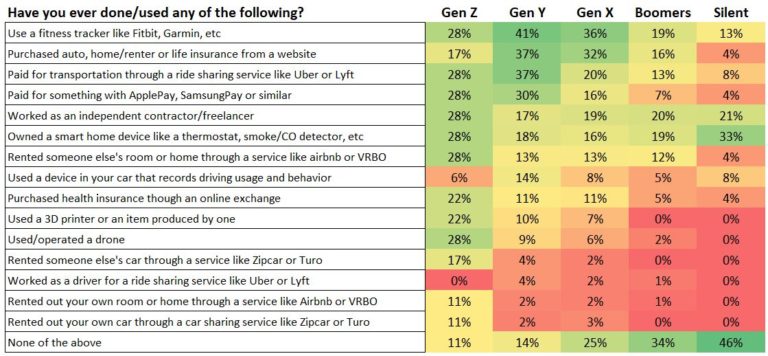IoT: Collaboration Is Now Mandatory
"Collaboration" actually does not begin to convey the looming and enormous demand for working together that IoT will require of all participants.

"Collaboration" actually does not begin to convey the looming and enormous demand for working together that IoT will require of all participants.

Get Involved
Our authors are what set Insurance Thought Leadership apart.
|
Partner with us
We’d love to talk to you about how we can improve your marketing ROI.
|

Stephen Applebaum, managing partner, Insurance Solutions Group, is a subject matter expert and thought leader providing consulting, advisory, research and strategic M&A services to participants across the entire North American property/casualty insurance ecosystem.
Up until now, changing a deductible or coverage amounts or adding a valuable meant contacting customer support. Not any more.

We've just announced a first-of-its-kind insurance policy. One that puts the power formerly reserved to brokers and agents in the hands of all Lemonade customers!
When we entered the insurance industry, we knew one of the biggest problems with traditional insurers was the endless amounts of red tape and long wait times. That’s why we committed to "instant everything" since day one.
From the world’s first 90-second sign-up to our world-record-setting claims process, we’ve hit some pretty exciting milestones, but they were just a preview of what we’ve got cooking.
See also: A Risk-Free Life Insurance Policy? (No)The Old Paper Policy
Up until now, if a customer wanted to change the deductible or coverage amounts or add a valuable that was just bought, the customer had to contact the insurer’s customer support and explain the issue. Then, customers would need to pay for some changes, and probably get a new policy sent to them in the mail (snail mail, of course). That’s where the red tape and long wait times come in, and where the industry, new or old, startup or multibillion-dollar corporation, is right now. But our customers can now make those changes on their own.
As far as we know, no other insurance company allows its customers to modify their coverages or even cancel their policy on their own.
The new release is a great example of the reason behind our decision to take the longer, harder path in becoming a full stack insurance carrier, rather than a reseller. It also explains why we bet on building our own technology instead of taking the easy path of buying old-school IT systems (the ones that run most insurance companies in America today, and the startups that resell their insurance).
Introducing Lemonade’s Live Policy
Even if you buy renters insurance directly from the likes of GEICO or Progressive, the only part that’s direct is taking your money and sending you a policy. Everything else requires customers to contact customer service — which we all know can be… painful.
That sucks. So, in the last couple of months we’ve been working hard on the second phase of our policy, turning it into a "live" document that can easily be modified without involving an agent!
With Live Policy, Lemonade customers (existing and new) can make changes to their coverages and more, whenever and wherever they are! It’s actually easier to change your Lemonade coverages than it is to pay for your latte. Just open our app, go to your policy and start playing with stuff!
Here’s a list of things you can now do with your existing policy:
Moments like these are the reason why we chose the hard way - becoming a real insurance company. It would have been a walk in the park to slap on some pretty UX over a centuries-old insurance carrier.
But we started from square one and built an insurance company from the ground up to address the very issues that turn people away from insurance. Doing so takes more than changing the way we market insurance, or even changing the very business model of insurance. It requires a dynamic focus on the issues our customers - and every insurance customer - face every day. It requires a commitment to tackling pain points, even (and especially) when it means questioning precedent.
See also: The Most Effective Insurance PolicyThis exciting new update is a part of a series of new features we’ll be releasing in coming months that will make insurance even more enjoyable, affordable and instant.
This post was originally posted on the Lemonade Blog
Get Involved
Our authors are what set Insurance Thought Leadership apart.
|
Partner with us
We’d love to talk to you about how we can improve your marketing ROI.
|

Shai Wininger is a veteran tech entrepreneur and inventor, who most recently co-founded Lemonade, a licensed insurance company powered by artificial intelligence and behavioral economics. He previously founded Fiverr.com, the world’s largest marketplace for creative and professional services.
Good executives and project managers minimize the risk of failure by going into implementations with eyes peeled for problems.

Get Involved
Our authors are what set Insurance Thought Leadership apart.
|
Partner with us
We’d love to talk to you about how we can improve your marketing ROI.
|

Scott Hinz is the director of sales and marketing for Innovative Computer Systems, developer of the Finys Suite for property and casualty insurance organizations writing personal and commercial lines.
A key question is emerging: “How can we illustrate and model insurance value to generations that may not grasp insurance?”

 Insurers’ primary focus has been on the product. Services were those things we did to support the product, such as underwriting, billing, and claims. A few services might be offered with the product, like roadside assistance, but for most products that has been rare. As a result, insurance is an intangible, and, to the customer, intangible can be unintelligible. In insurance, customers pay for a protective concept, not a physical asset.
Traditionally, the agent or broker’s job was to explain and reinforce the value of insurance to the insured, helping him to “get it.” Peace of mind was sold as an actual product. You could have peace of mind that insurers would make you “whole” if your home was damaged, you were in an accident or if a death occurred, to help cover the needs of the family. Majesco found in its survey that the greatest understanding in insurance was among those in the Silent Generation – many who bought into the traditional “peace of mind” product. But confusion rapidly grew in the younger generations.
Many have predicted the demise of the agent and broker channel. Many other industries have eliminated that layer and are seeing success. Retail sales, for example, are shifting and thriving online. Banks are still relevant, driven by apps that keep customers in touch with their money. But insurance, the way it was designed, sold, serviced and understood by the Silent generation, doesn’t resonate with Millennial and Gen Z — generations that may value the concept of insurance protection but don’t understand how it works or why it is so difficult to research, buy and service.
Businesses and insurance have their own corresponding issue. Small and medium-sized businesses (SMBs), increasingly led by Millennials and Gen X, don’t necessarily see or understand how insurance companies can best serve them. They also see the insurance process as confusing and lacking in value.
For both individuals and businesses, there is a double-whammy — they are legally bound to carry home, auto and property insurance (and other lines in the case of SMBs). Right or wrong, they may resent being forced to pay for intangibles that provide little perceived value and have a not-so-great experience. A successful claims experience can change that perceived value, helping them grasp the benefits of adequate protective cover. But that may not happen for a long time … so the quest for value and relevance stays alive. Today’s customers are looking for organizations that give them a product that makes sense in light of the measures that they may take to protect themselves.
In both cases, consumer and SMBs, business models, products, processes and systems were built for earlier times – for the Silent and Baby Boomer generations. But the generations coming up behind them need something that is relevant in the digital age, where there is a vast difference in needs, demographics and expectations.
Improving the experience — What goes around, sometimes falls off
The cycle of insurance, where we met each new generation with a simple variation on the products of the last generation isn’t going to work. Majesco found that none of the three categories (Researching, Buying & Renewing and Service) could claim to produce great insurance experiences across the industry.
See also: Are You Buying the Wrong Leads?
The goal, then, is to build compelling customer experiences and to let some of the old fall off. There will be parts of the customer experience and process chain that will no longer be needed. There will be others that you cannot live without. In the coming weeks, we are going to have multiple blogs on customer journey improvement. You’ll want to listen in on these because they come from some of Majesco’s top experts on insurance experience. But for now, we’ll leave you with four overarching themes.
Insurers’ primary focus has been on the product. Services were those things we did to support the product, such as underwriting, billing, and claims. A few services might be offered with the product, like roadside assistance, but for most products that has been rare. As a result, insurance is an intangible, and, to the customer, intangible can be unintelligible. In insurance, customers pay for a protective concept, not a physical asset.
Traditionally, the agent or broker’s job was to explain and reinforce the value of insurance to the insured, helping him to “get it.” Peace of mind was sold as an actual product. You could have peace of mind that insurers would make you “whole” if your home was damaged, you were in an accident or if a death occurred, to help cover the needs of the family. Majesco found in its survey that the greatest understanding in insurance was among those in the Silent Generation – many who bought into the traditional “peace of mind” product. But confusion rapidly grew in the younger generations.
Many have predicted the demise of the agent and broker channel. Many other industries have eliminated that layer and are seeing success. Retail sales, for example, are shifting and thriving online. Banks are still relevant, driven by apps that keep customers in touch with their money. But insurance, the way it was designed, sold, serviced and understood by the Silent generation, doesn’t resonate with Millennial and Gen Z — generations that may value the concept of insurance protection but don’t understand how it works or why it is so difficult to research, buy and service.
Businesses and insurance have their own corresponding issue. Small and medium-sized businesses (SMBs), increasingly led by Millennials and Gen X, don’t necessarily see or understand how insurance companies can best serve them. They also see the insurance process as confusing and lacking in value.
For both individuals and businesses, there is a double-whammy — they are legally bound to carry home, auto and property insurance (and other lines in the case of SMBs). Right or wrong, they may resent being forced to pay for intangibles that provide little perceived value and have a not-so-great experience. A successful claims experience can change that perceived value, helping them grasp the benefits of adequate protective cover. But that may not happen for a long time … so the quest for value and relevance stays alive. Today’s customers are looking for organizations that give them a product that makes sense in light of the measures that they may take to protect themselves.
In both cases, consumer and SMBs, business models, products, processes and systems were built for earlier times – for the Silent and Baby Boomer generations. But the generations coming up behind them need something that is relevant in the digital age, where there is a vast difference in needs, demographics and expectations.
Improving the experience — What goes around, sometimes falls off
The cycle of insurance, where we met each new generation with a simple variation on the products of the last generation isn’t going to work. Majesco found that none of the three categories (Researching, Buying & Renewing and Service) could claim to produce great insurance experiences across the industry.
See also: Are You Buying the Wrong Leads?
The goal, then, is to build compelling customer experiences and to let some of the old fall off. There will be parts of the customer experience and process chain that will no longer be needed. There will be others that you cannot live without. In the coming weeks, we are going to have multiple blogs on customer journey improvement. You’ll want to listen in on these because they come from some of Majesco’s top experts on insurance experience. But for now, we’ll leave you with four overarching themes.

Get Involved
Our authors are what set Insurance Thought Leadership apart.
|
Partner with us
We’d love to talk to you about how we can improve your marketing ROI.
|

Denise Garth is senior vice president, strategic marketing, responsible for leading marketing, industry relations and innovation in support of Majesco's client-centric strategy.
Increasingly, leaders are looking at other risks, which have not been measurable or predictable in the past, but are becoming more so.

Get Involved
Our authors are what set Insurance Thought Leadership apart.
|
Partner with us
We’d love to talk to you about how we can improve your marketing ROI.
|

Dominic Colaizzo is responsible for managing and providing strategic direction as the chairman of Aon’s national healthcare practice and for directing and coordinating Aon resources for the development, implementation and servicing of alternative risk financing programs and broking for healthcare clients on a national basis.
Start by putting the threats on a grid, with one bar being the likelihood of the exposure and the second being the potential severity of the risk.

Get Involved
Our authors are what set Insurance Thought Leadership apart.
|
Partner with us
We’d love to talk to you about how we can improve your marketing ROI.
|

Mark Walls is the vice president, client engagement, at Safety National.
He is also the founder of the Work Comp Analysis Group on LinkedIn, which is the largest discussion community dedicated to workers' compensation issues.
While staying ahead of innovation is a mantra for the tech sector, many industries have not ranked innovation slowdowns as a threat – yet.

Get Involved
Our authors are what set Insurance Thought Leadership apart.
|
Partner with us
We’d love to talk to you about how we can improve your marketing ROI.
|

Eric Boyum serves as a managing director and national leader of Aon’s technology and communications industry practice. This industry practice serves more than 1,400 clients representing over $1 billion in annual premiums. The ARS U.S. technology practice is one of our largest and fastest growing industry groups. In this role, Boyum leads Aon’s research, strategy and alignment of Aon core competencies in risk, health talent and retirement to meet the current and future needs of technology companies.
My advice is to lead from the top. Organizations' boards of directors need to ensure risk assessments are thorough and up-to-date,

Get Involved
Our authors are what set Insurance Thought Leadership apart.
|
Partner with us
We’d love to talk to you about how we can improve your marketing ROI.
|

Greg Reber is the founder and CEO of AsTech Consulting, a leading information security consulting firm. As a pioneer in the information security field, Reber was among the first to recognize and address the risks presented by consumer-facing applications.
As prices come down, virtual private networks (VPNs) are becoming a must-have tool for many small- and medium-size business owners.

Get Involved
Our authors are what set Insurance Thought Leadership apart.
|
Partner with us
We’d love to talk to you about how we can improve your marketing ROI.
|

Byron Acohido is a business journalist who has been writing about cybersecurity and privacy since 2004, and currently blogs at LastWatchdog.com.
I participated in many workers' comp mediations before I became a mediator but never saw a conversation with the injured worker.

Get Involved
Our authors are what set Insurance Thought Leadership apart.
|
Partner with us
We’d love to talk to you about how we can improve your marketing ROI.
|

Teddy Snyder mediates workers' compensation cases throughout California through WCMediator.com. An attorney since 1977, she has concentrated on claim settlement for more than 19 years. Her motto is, "Stop fooling around and just settle the case."